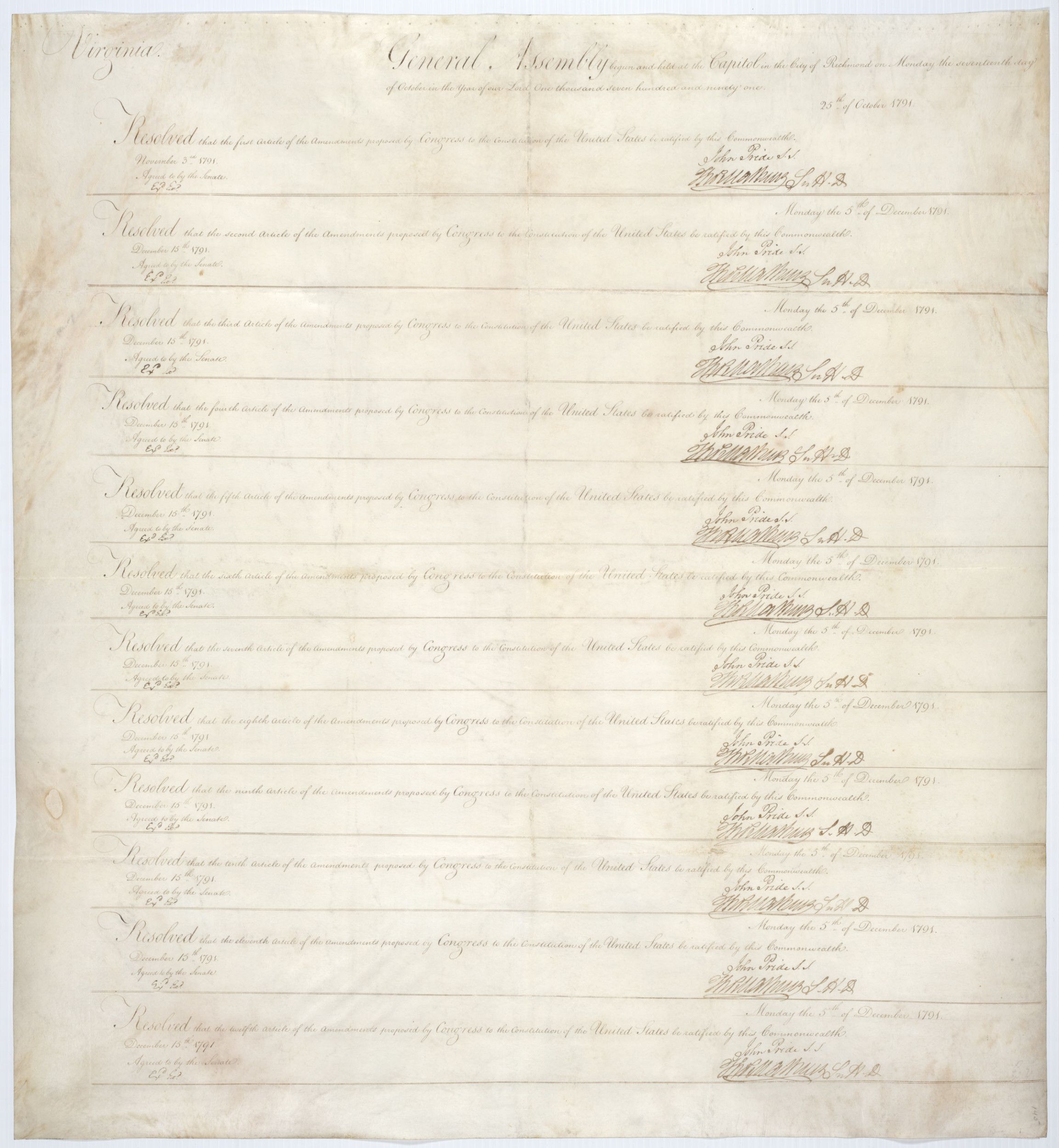Virginia's Ratification of the Bill of Rights
12/15/1791
Add to Favorites:
Add all page(s) of this document to activity:

The Bill of Rights became the first 10 amendments to the Constitution when Virginia ratified them on December 15, 1791. Of the 14 states in the Union, Virginia was the 11th to ratify, thus providing the constitutionally required bar of three-quarters of the states needed for ratification. Since 1941, December 15 has been celebrated as Bill of Rights Day.
Additional details from our exhibits and publications
Some delegates to the Constitutional Convention had suggested adding a Bill of Rights to the Constitution, but the idea generated little support. When opponents of the Constitution used the lack of a Bill of Rights to whip up opposition to ratification the issue resurfaced. Several states adopted the new Constitution because its supporters promised that Congress would take up the issue and amend the Constitution. Representative James Madison of Virginia had originally thought a Bill of Rights was unnecessary, but by the time of the First Congress he realized that such amendments were a political necessity. On June 8, 1789, with the support of President Washington, Madison proposed several amendments on the House floor. In September, after reorganizing the proposals several times, Congress submitted 12 amendments for ratification. On December 15, 1791, Virginia became the 11th state to ratify 10 of the 12 proposed. These became the first 10 amendments to the Constitution. The two that failed dealt with the size of the House and with congressional pay raises. The latter, however, was eventually ratified by the states in 1992 and became the 27th Amendment to the Constitution. See more fascinating documents highlighting the history of the legislative branch in the Treasures of Congress online exhibit.
This primary source comes from the General Records of the United States Government.
National Archives Identifier: 5721244
Full Citation: Virginia's Ratification of the Bill of Rights; 12/15/1791; General Records of the United States Government, Record Group 11. [Online Version, https://docsteach.org/documents/document/virginias-ratification-of-the-bill-of-rights, April 25, 2024]Rights: Public Domain, Free of Known Copyright Restrictions. Learn more on our privacy and legal page.



